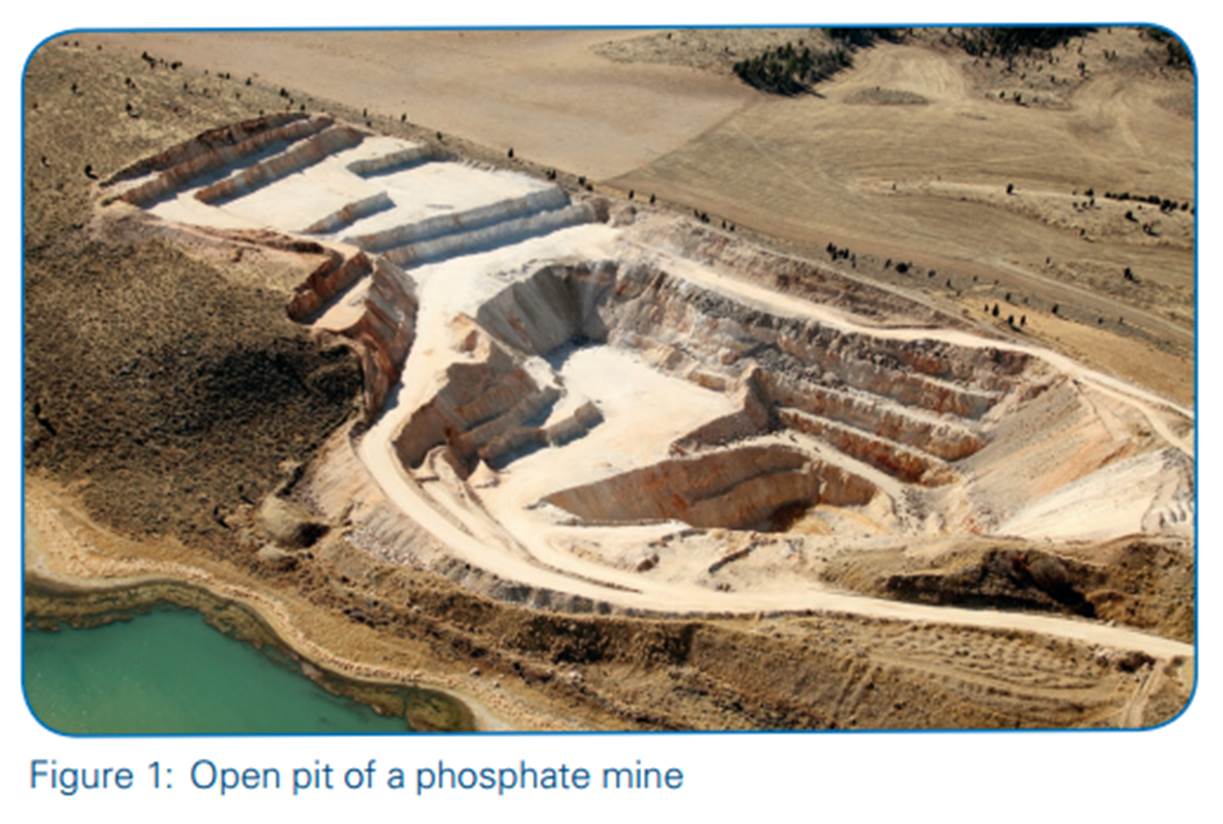Knowledge
Analysis in Phosphate Rocks by EDXRF

EDXRF is an excellent technique for fast and reliable determination of major and minor elements in phosphate rocks
Major and Minor Element Analysis
in Phosphate Rocks by EDXRF
Introduction
Phosphate rocks have a wide industrial use as raw material for phosphorous containing materials. Apatite, a mineral with a high calcium phosphate content, is one such phosphorous source and is often used for the production of phosphoric acid which is later used to produce fertilizers. Indeed, approximately 90 % of industrially mined phosphate rocks are used for the production of fertilizers and animal feed supplements. As available sources of high-grade phosphate ores are declining, the beneficiation of lower grade ores by washing, flotation and calcining is becoming more and more important. With such increasing demand for economical process optimization, the analysis of major and minor elements in phosphate rocks (see Fig. 1) is getting more and more important.

For such elemental analysis, X-ray fluorescence spectroscopy (XRF) is the preferred technique as it is straight forward, fast and precise with only simple sample preparation. Of the two main types of XRF spectrometer, energy dispersive X-ray fluorescence spectrometry (EDXRF) is very common for such analysis.
Fluorapatite, naturally the most common impurity in apatite, generates hydrogen fluoride as a byproduct during the production of phosphoric acid. In the meantime this byproduct is one of the industrial sources of hydrofluoric acid. Therefore detailed knowledge of the fluorine concentration in phosphate rocks is of great advantage for an optimized process control. However, until very recently, light element sensitivity on EDXRF spectrometers has been very poor. Low energy fluorescence from elements such as magnesium (Mg, Kα1 = 1.25 keV) and especially for fluorine (F, Kα1 = 0.677 keV) was easily absorbed by thick detector windows. Modern detector technology, combined with high power direct excitation and thin stabilized entrance windows make the EDXRF spectrometer S2 RANGER with the XFlash® LE detector far superior compared to conventional EDXRF instruments.
This lab report demonstrates the analytical performance of the S2 RANGER with XFlash® LE detector and Ag target X-ray tube for the analysis of major and minor elements in phosphate rocks, especially for the light element fluorine.
Conclusions
EDXRF is an excellent technique for fast and reliable determination of major and minor elements in phosphate rocks. Fluorine is a very light element and typically very difficult to determine by EDXRF. Due to the ultrathin high transmission window, the excellent resolution of the SDD and the direct excitation technique of the S2 RANGER, light elements can be determined very accurately and precisely. The data shown proves the outstanding performance of the S2 RANGER with XFlash LE and demonstrates the suitability of the system to monitor phosphate rocks in process control and quality control.
Credit : Bruker Co., Ltd.
Contact us
388/5 Nuanchan Road, Nuanchan,
Buengkum, Bangkok 10230
0 2363 8585 (auto)
0 2363 8595
081 498 9939






